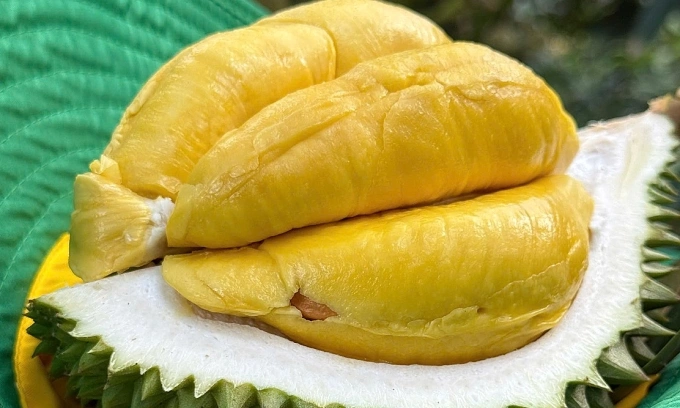China’s Fresh Durian Imports Face Major Decline Amid Stricter Quality Controls
China’s appetite for fresh durians has significantly cooled in the first five months of 2025, with imports dropping by over a third compared to the same period last year. According to customs data, the country imported 390,900 tons of the tropical fruit valued at US$1.93 billion—marking a 32.5% decrease in value and a 32.9% drop in volume from 2024.
This sharp decline follows the implementation of stringent safety measures by Chinese authorities aimed at addressing concerns around pesticide residues and other food safety issues. The most notable regulation requires all durian shipments to be accompanied by laboratory reports confirming the absence of Basic Yellow 2 (auramine O), a synthetic dye previously used to enhance the appearance of the fruit. This chemical has been classified as potentially carcinogenic, prompting its prohibition in food exports.
Top Suppliers Feel the Impact
Thailand, historically the largest exporter of durians to China, experienced a significant setback, with exports falling by 24% to $1.67 billion during the period. Vietnam, the second-largest supplier, saw an even steeper decline, with shipments plummeting by 62% to $254 million.
The introduction of these new requirements initially caused widespread disruptions at border checkpoints. Many consignments were either delayed or rejected entirely, leading some exporters to dispose of spoiled goods while others redirected their stock to local markets at heavily discounted prices.
In response to the crisis, Thai authorities swiftly mobilized resources to restore trade flow. They expanded testing capacity by registering additional laboratories, reviewed existing facilities, and deployed more personnel to support export procedures. These efforts were praised by Dan Martin, an international business adviser based in Hanoi, who noted that Thailand “moved with impressive speed to establish farm-level testing facilities and quickly restored China’s trust.”
Chinese customs also supported the recovery by introducing 24-hour clearance operations at key border checkpoints for Thai durians, helping to stabilize trade and reduce losses for Thai farmers.
Vietnam Steps Up Its Game
Vietnam, too, is working to overcome the export bottleneck. The government has introduced a series of corrective actions, including tighter oversight of production, harvesting, quarantine, and export standards. Authorities are also intensifying monitoring of cadmium and pesticide levels and enhancing traceability through digital tracking systems.
The Ministry of Agriculture and Environment has directed its Plant Protection Department to enforce strict penalties on fertilizer importers and distributors violating safety regulations. In May, border checkpoint working hours were extended, and additional staff were assigned to expedite processing. That same month, China approved an additional 829 growing areas and 131 packing facilities for Vietnamese durians.
Vietnam has now established 12 certified labs for cadmium testing and eight facilities equipped to detect auramine O in durians.
New Players Enter the Market
Despite the current slowdown, China remains the world’s largest market for durians, having imported nearly $7 billion worth of the fruit in 2024. The market is becoming increasingly competitive, with new players entering the fray.
Malaysia joined the export race in 2024 after signing an official protocol with China in June. During the final four months of the year, Malaysia exported RM24.8 million (US$5.5 million) worth of fresh durians. Though still a small share, Malaysian durians have gained traction among Chinese consumers due to their premium quality.
Indonesia has also announced plans to begin direct durian shipments to China, currently exporting through Thailand. Cambodia recently entered the market as well, with China customs starting to accept eligible durian shipments from the country in late April.
As the regulatory landscape evolves and competition heats up, suppliers across Southeast Asia are adapting rapidly to maintain access to one of the world’s most lucrative durian markets.







